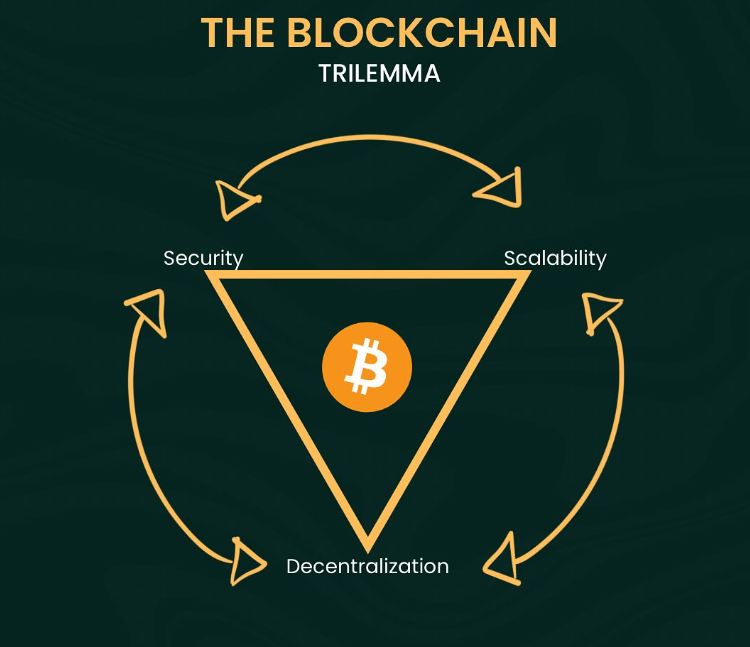Unlocking Scalability: Exploring Blockchain Scaling Solutions
 Nicodemus kiptoo
Nicodemus kiptoo
In the ever-evolving landscape of blockchain technology, scalability remains a critical challenge impeding widespread adoption and mainstream integration. As blockchain networks strive to accommodate growing user bases and increasing transaction volumes, the need for scalable solutions becomes increasingly apparent. In this article, we'll delve into various scaling solutions, including layer 2 solutions, sharding, and sidechains, exploring how they address scalability challenges in blockchain networks.
Understanding Blockchain Scalability Challenges
Blockchain networks, such as Bitcoin and Ethereum, face inherent scalability limitations due to their consensus mechanisms and decentralized architectures. The following challenges hinder their ability to process a high volume of transactions efficiently:
Throughput Limitations: Traditional blockchain networks often struggle to achieve high throughput rates, limiting the number of transactions they can process per second.
Latency Issues: Increasing network congestion can lead to delays in transaction confirmation times, resulting in poor user experience and reduced efficiency.
Cost Inefficiencies: Rising transaction fees during periods of high demand can make blockchain transactions prohibitively expensive for users, particularly in microtransaction scenarios.
Exploring Blockchain Scaling Solutions
To address these scalability challenges, blockchain developers and researchers have proposed a variety of scaling solutions, each offering unique approaches to enhance network throughput, reduce latency, and optimize resource utilization. Let's explore some of the most prominent scaling solutions:
1. Layer 2 Solutions:
Layer 2 scaling solutions aim to enhance blockchain scalability by processing transactions off-chain, thereby alleviating the burden on the main blockchain network. Examples of layer 2 solutions include:
State Channels: State channels enable participants to conduct off-chain transactions privately and securely, settling the final state on the main blockchain only when necessary.
Payment Channels: Payment channels facilitate peer-to-peer micropayments off-chain, reducing transaction costs and improving throughput for small-value transactions.
Plasma: Plasma frameworks enable the creation of scalable, hierarchical blockchain structures, where multiple child chains (or plasma chains) can process transactions independently before committing them to the main chain.
2. Sharding:
Sharding is a scaling technique that partitions the blockchain network into smaller, more manageable subsets called shards. Each shard operates as an independent blockchain, processing a subset of transactions in parallel. Sharding enables horizontal scalability, allowing blockchain networks to process transactions in parallel across multiple shards, thereby increasing overall throughput and capacity.
3. Sidechains:
Sidechains are independent blockchain networks that are interoperable with the main blockchain network, allowing users to transfer assets and data between different chains seamlessly. By offloading transactions to sidechains, the main blockchain can focus on processing high-value transactions, improving overall scalability and performance.
Advantages and Challenges of Scaling Solutions
While scaling solutions offer promising avenues for improving blockchain scalability, they also present various advantages and challenges:
Advantages:
Enhanced Throughput: Scaling solutions enable blockchain networks to process a higher volume of transactions per second, improving overall throughput and capacity.
Reduced Latency: By offloading transactions off-chain or processing them in parallel, scaling solutions can reduce transaction confirmation times and improve network responsiveness.
Lower Costs: Implementing scalable solutions can reduce transaction fees and make blockchain transactions more affordable for users, fostering greater adoption and usability.
Challenges:
Security Risks: Layer 2 solutions and sidechains may introduce new security vulnerabilities, such as state channel attacks or double-spending risks, requiring robust security measures and protocol designs.
Interoperability Issues: Integrating multiple scaling solutions into existing blockchain networks may pose interoperability challenges, necessitating standardized protocols and cross-chain communication mechanisms.
Governance Complexity: Sharding and sidechain implementations may introduce governance complexities, requiring consensus mechanisms and decision-making processes to coordinate network upgrades and protocol changes.
Conclusion: Embracing Scalability for Blockchain Evolution
As blockchain technology continues to evolve, scalability remains a central focus for developers, researchers, and industry stakeholders. By exploring and implementing innovative scaling solutions such as layer 2 solutions, sharding, and sidechains, blockchain networks can overcome scalability challenges, unlock new use cases, and pave the way for mainstream adoption and integration. However, addressing scalability requires a concerted effort from the blockchain community, involving collaboration, experimentation, and continuous innovation to build scalable, resilient, and inclusive blockchain ecosystems for the future.
Subscribe to my newsletter
Read articles from Nicodemus kiptoo directly inside your inbox. Subscribe to the newsletter, and don't miss out.
Written by

Nicodemus kiptoo
Nicodemus kiptoo
DevRel,frontend dev,web dev, Discord/social media management, graphics, Business adm,web3 education|| Equality advocate